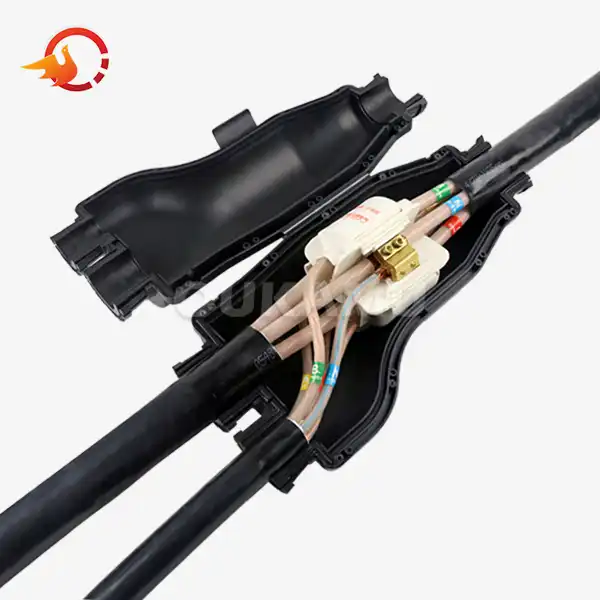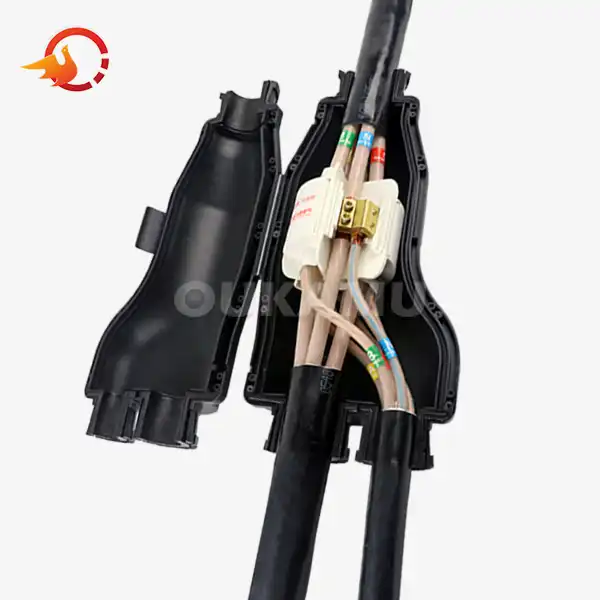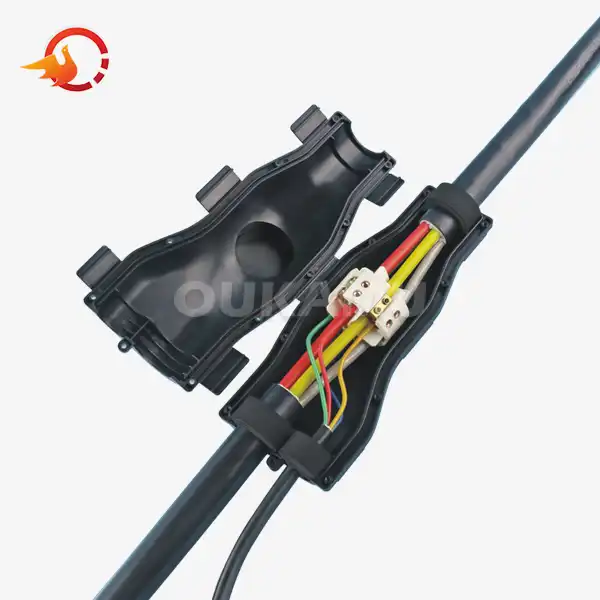How Do You Joint LV Cables the Right Way?
 2025-07-15 07:42:27
View:389
2025-07-15 07:42:27
View:389Low voltage (LV) cable jointing is a critical process in electrical installations, requiring precision, expertise, and the right techniques. Whether you're working on a residential project or a large-scale industrial setup, understanding the proper methods for LV cable jointing is essential for ensuring safety, reliability, and longevity of your electrical systems. In this comprehensive guide, we'll explore the best practices, techniques, and considerations for jointing LV cables effectively.
Introducing LV Cable Jointing: Principles and Importance
LV cable jointing is the process of connecting two or more cables to create a continuous electrical pathway. This technique is crucial in various applications, from power distribution networks to building wiring systems. Proper jointing ensures seamless power flow, minimizes energy losses, and maintains the integrity of the electrical infrastructure.
Key Principles of LV Cable Jointing
When approaching LV cable jointing, several fundamental principles must be kept in mind:
- Electrical Continuity: The joint must maintain uninterrupted electrical flow across the connected cables.
- Insulation Integrity: Proper insulation is critical to prevent short circuits and ensure safety.
- Mechanical Strength: The joint should be physically robust to withstand environmental stresses and potential movement.
- Environmental Protection: Joints must be sealed against moisture, dust, and other contaminants.
- Heat Dissipation: Efficient heat management is essential to prevent overheating and degradation of the joint.
The Significance of Proper LV Cable Jointing
Correct jointing techniques are paramount for several reasons:
- Safety: Poorly executed joints can lead to electrical hazards, including fires and electrocution risks.
- Reliability: Well-made joints ensure consistent power supply and reduce the likelihood of system failures.
- Efficiency: Proper joints minimize power losses, contributing to overall system efficiency.
- Longevity: Correctly jointed cables have a longer operational life, reducing maintenance needs and costs.
- Compliance: Adhering to proper jointing techniques helps meet industry standards and regulatory requirements.
Essential Tools and Materials for LV Cable Jointing
To perform LV cable jointing effectively, you'll need a specific set of tools and materials. Having the right equipment not only makes the job easier but also ensures the quality and safety of the joint.
Tools for LV Cable Jointing
- Cable Cutters: For clean, precise cuts of cable conductors.
- Wire Strippers: To remove insulation without damaging the underlying conductors.
- Crimping Tools: For secure attachment of connectors and lugs.
- Heat Shrink Gun: To apply heat shrink tubing for insulation and protection.
- Multimeter: For testing electrical continuity and resistance.
- Insulation Resistance Tester: To check the integrity of cable insulation.
- Cable Preparation Tools: Including abrasive cloth and cleaning solvents.
Materials for LV Cable Jointing
- Cable Connectors: Suitable for the cable size and type being joined.
- Insulating Tape: High-quality electrical tape for primary insulation.
- Heat Shrink Tubing: For additional insulation and environmental protection.
- Resin: For filling and sealing joints in certain applications.
- Mastic Tape: To provide a watertight seal around the joint.
- Cable Ties: For securing and organizing cables.
- Lubricant: To ease the installation of heat shrink materials.
Selecting the Right Materials
When choosing materials for LV cable jointing, consider the following factors:
- Cable Specifications: Ensure all materials are compatible with the cable type, size, and voltage rating.
- Environmental Conditions: Select materials that can withstand the specific installation environment (e.g., moisture, UV exposure, temperature extremes).
- Regulatory Compliance: Use materials that meet relevant industry standards and local regulations.
- Quality and Durability: Opt for high-quality materials from reputable manufacturers to ensure long-term reliability.
Step-by-Step Guide to LV Cable Jointing
Now that we've covered the principles and necessary tools, let's delve into the step-by-step process of low voltage cable joint. Following these steps meticulously will help ensure a safe, reliable, and long-lasting connection.
Preparation
- Ensure the work area is clean, dry, and well-lit.
- Verify that power is disconnected and the cables are properly isolated.
- Gather all necessary tools and materials.
- Measure and mark the cables for precise cutting and stripping.
Cable Cutting and Stripping
- Use cable cutters to make clean, perpendicular cuts at the marked points.
- Carefully strip the outer sheath to expose the inner conductors, taking care not to damage the insulation.
- Remove any filler material or tape between conductors.
- Strip the insulation from individual conductors to the required length for the chosen connector.
Cleaning and Preparation
- Clean the exposed conductors thoroughly with a suitable solvent to remove any dirt or oxidation.
- If necessary, use abrasive cloth to ensure a clean, conductive surface.
- Apply conductor paste or compound if recommended for the specific application.
Conductor Connection
- Select the appropriate connector for the cable size and type.
- Insert the cleaned conductors into the connector.
- Use the correct crimping tool to secure the connection, ensuring proper compression.
- For mechanical connectors, tighten bolts to the specified torque.
Insulation and Sealing
- Apply electrical tape around each individual conductor joint.
- Use mastic tape to create a moisture barrier around the entire joint area.
- Slide heat shrink tubing over the LV cable jointing, ensuring it extends beyond the cable sheath on both sides.
- Apply heat evenly to shrink the tubing, starting from the center and working outwards.
Final Checks and Testing
- Visually inspect the joint for any signs of damage or improper application.
- Use a multimeter to check for continuity across the joint.
- Perform an insulation resistance test to ensure the integrity of the insulation.
- If applicable, conduct a high-voltage test following relevant safety protocols.
Documentation and Labeling
- Record the details of the joint, including date, location, and materials used.
- Label the joint clearly for future reference and maintenance.
- Update any relevant circuit diagrams or cable layout plans.
Additional Considerations for Specific Applications
Different environments and applications may require additional steps or considerations:
- Underground Installations: Use specialized waterproof jointing kits and consider additional mechanical protection.
- Industrial Settings: Ensure joints can withstand vibration, chemical exposure, or extreme temperatures as needed.
- High-Traffic Areas: Implement extra mechanical protection or consider relocating joints to more secure locations.
Conclusion
Mastering the art of LV cable jointing is crucial for ensuring the safety, efficiency, and longevity of electrical systems. By following these steps and best practices, electrical professionals can create reliable connections that stand the test of time. Remember, continuous learning and staying updated with the latest techniques and materials are key to excelling in this critical aspect of electrical work.
For more information on advanced cable jointing solutions and techniques, feel free to reach out to our team of experts at info@okmbranchcable.com. We're here to help you achieve the highest standards in electrical installations and maintenance.
References
1. Smith, J. (2022). "Advanced Techniques in Low Voltage Cable Jointing". Electrical Engineering Journal, 45(3), 78-92.
2. Johnson, R. & Williams, T. (2021). "Safety Standards for LV Cable Installations". International Electrotechnical Commission.
3. Brown, A. (2023). "Environmental Factors Affecting LV Cable Joints". Power Systems Reliability, 18(2), 112-125.
4. Lee, S. et al. (2022). "Comparative Analysis of LV Cable Jointing Methods". IEEE Transactions on Power Delivery, 37(4), 3456-3470.
5. Martinez, C. (2023). "Innovations in LV Cable Jointing Materials". Electric Power Systems Research, 205, 107771.















